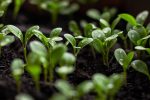Callus culture is a technique used in plant tissue culture to generate undifferentiated masses of cells known as callus. Callus is formed by the unorganized growth of cells in an in vitro environment. It serves as a starting material for various applications, including plant regeneration, somatic embryogenesis, genetic transformation, and the production of secondary metabolites.
The process of callus culture involves several steps:
- Explant Selection: The first step is to select an appropriate explant, which is a piece of plant tissue that will be used to initiate callus formation. Explants can be derived from different parts of the plant, such as leaves, stems, roots, or embryos, depending on the objective of the culture.
- Sterilization: The explants are sterilized to eliminate any contaminants, including fungi, bacteria, and other microorganisms that may interfere with callus growth. Sterilization is typically achieved by treating the explants with a combination of disinfectants, such as bleach or ethanol, followed by rinsing with sterile distilled water.
- Initiation of Explant: The sterilized explants are placed on a culture medium that contains nutrients, vitamins, and plant growth regulators. The medium may also contain agar to solidify it and provide a stable substrate for explant attachment. The choice of medium composition depends on the specific plant species and the desired outcome.
- Incubation and Growth: The culture vessels with the explants are placed in a controlled environment, typically in a growth chamber or incubator, with optimal temperature, light intensity, and photoperiod conditions. The explants are allowed to grow and develop into callus over time. Regular monitoring of the cultures is necessary to observe callus formation and assess its growth characteristics.
- Subculturing: As the callus grows, it becomes necessary to transfer it to fresh culture media to maintain its viability and prevent overcrowding. This process, known as subculturing, involves the removal of the callus from the original culture vessel and transferring it to a new vessel with fresh medium. Subculturing is typically performed at regular intervals, depending on the growth rate of the callus.
- Callus Proliferation: Through successive subculturing, the callus proliferates and expands in size. The proliferation rate may vary depending on the plant species and the composition of the culture medium. Adequate nutrient supply, balanced growth regulators, and optimal environmental conditions promote callus growth.
- Differentiation and Regeneration: Depending on the objectives of the callus culture, further steps can be taken to induce differentiation and regeneration of specific plant structures. This can be achieved by altering the composition of the culture medium, adjusting growth regulator concentrations, or employing specific treatments to induce organogenesis or embryogenesis from the callus.
Callus culture serves as a versatile tool in plant tissue culture, providing a means to study cell behavior, induce genetic transformation, and generate new plants from non-embryogenic tissues. The success of callus culture depends on the selection of appropriate explants, effective sterilization, suitable culture medium formulation, and optimization of growth conditions to promote callus growth and subsequent differentiation.

Leave a Reply